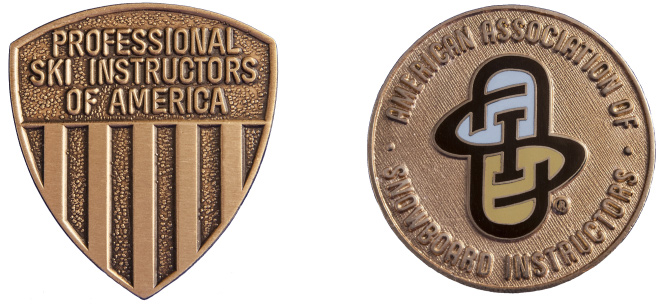[fusion_builder_container type=”flex” hundred_percent=”no” equal_height_columns=”no” menu_anchor=”” hide_on_mobile=”small-visibility,medium-visibility,large-visibility” class=”” id=”” background_color=”” background_image=”” background_position=”center center” background_repeat=”no-repeat” fade=”no” background_parallax=”none” parallax_speed=”0.3″ video_mp4=”” video_webm=”” video_ogv=”” video_url=”” video_aspect_ratio=”16:9″ video_loop=”yes” video_mute=”yes” overlay_color=”” video_preview_image=”” border_color=”” border_style=”solid” padding_top=”” padding_bottom=”” padding_left=”” padding_right=””][fusion_builder_row][fusion_builder_column type=”1_1″ layout=”1_1″ background_position=”left top” background_color=”” border_color=”” border_style=”solid” border_position=”all” spacing=”yes” background_image=”” background_repeat=”no-repeat” padding_top=”” padding_right=”” padding_bottom=”” padding_left=”” margin_top=”0px” margin_bottom=”0px” class=”” id=”” animation_type=”” animation_speed=”0.3″ animation_direction=”left” hide_on_mobile=”small-visibility,medium-visibility,large-visibility” center_content=”no” last=”true” min_height=”” hover_type=”none” link=”” border_sizes_top=”” border_sizes_bottom=”” border_sizes_left=”” border_sizes_right=”” first=”true”][fusion_text fbme_roles=”” columns=”” column_min_width=”” column_spacing=”” rule_style=”default” rule_size=”” rule_color=”” content_alignment_medium=”” content_alignment_small=”” content_alignment=”” hide_on_mobile=”small-visibility,medium-visibility,large-visibility” sticky_display=”normal,sticky” class=”” id=”” margin_top=”” margin_right=”” margin_bottom=”” margin_left=”” font_size=”” fusion_font_family_text_font=”” fusion_font_variant_text_font=”” line_height=”” letter_spacing=”” text_color=”” animation_type=”” animation_direction=”left” animation_speed=”0.3″ animation_offset=””]
Goal Setting with Josh Fogg
Did you set a new year’s resolution related to your skiing, riding, or teaching? Learn what PSIA-AASI National Team member Josh Fogg is working on this season.
Instructors and athletes at the top of their craft know there’s always room for professional development. They’re also adept at formulating a strategy to successfully reach their goals.
This series of stories focuses on how team members set goals and build plans to achieve their goals. Learn from team PSIA Alpine Team member Josh Fogg’s insight and find takeaways for your own approach.
Josh Fogg’s Goals for the Season
Goals: To improve my students’ performance, I’m combining ideas about how I teach movement with my technical understanding of skiing. Specifically, I’m finding opportunities to create choices for my students, help them recognize their improved performance, and integrate external cues as we move from “what” to do into “how” to do it. In this approach, my student and I collaborate while we improve the quality of their movements.
Teaching skiing can quickly veer into an intimidating world of complexity. And yet, sometimes, when we simplify a concept, we accidentally make it too simple. Instead, I look for the middle ground that combines the complexity of what to do with simple ideas of how to achieve the goal.
My Plan: What goals I’m pursuing and how I’m pursuing them sound different, as I believe they should. What I’m pursuing can include body parts, details of skill blending, or the physics surrounding the idea. What I’m pursuing – which can include specific body movement, details on skill blending, and the related physics of it all – can sound very different than how I intend to get there. For instance, the “how” can start with just determining where on the snow I plan to ski to give me plenty of time to anticipate the action, and an external cue to help me dial in the movement for the situation. In short, my coaching to myself, and others, toggles back and forth between the what and how. The process allows me to zoom in or out for finer details or a larger perspective to enhance performance.
Resources to Use: I use feedback from my students, and my own experiences, to develop a more effective coaching approach. I also use information from Nick Winkleman’s “The Language of Coaching” as a resource.
How You Can Use this Plan: In his book Winkleman writes, “Attention is the currency of learning.” Our job is to capture, retain, and direct people’s attention to ideas or suggestions, then make the ideas “stick” in their long-term memory.
Following a prescribed lesson plan might help you structure your thoughts, but are you capturing, retaining, and directing your students’ attention? To get your students’ attention, it’s best to collaborate with them on setting goals for success, giving them choices on what and when you give them feedback, and use external cues to help them learn.
[/fusion_text][/fusion_builder_column][fusion_builder_column type=”1_1″ fbme_roles=”” align_self=”auto” content_layout=”column” align_content=”flex-start” valign_content=”flex-start” content_wrap=”wrap” spacing=”” center_content=”no” link=”” target=”_self” min_height=”” hide_on_mobile=”small-visibility,medium-visibility,large-visibility” sticky_display=”normal,sticky” class=”” id=”” type_medium=”” type_small=”” order_medium=”0″ order_small=”0″ dimension_spacing_medium=”” dimension_spacing_small=”” dimension_spacing=”” dimension_margin_medium=”” dimension_margin_small=”” margin_top=”” margin_bottom=”” padding_medium=”” padding_small=”” padding_top=”” padding_right=”” padding_bottom=”” padding_left=”” hover_type=”none” border_sizes=”” border_color=”” border_style=”solid” border_radius=”” box_shadow=”no” dimension_box_shadow=”” box_shadow_blur=”0″ box_shadow_spread=”0″ box_shadow_color=”” box_shadow_style=”” background_type=”single” gradient_start_color=”” gradient_end_color=”” gradient_start_position=”0″ gradient_end_position=”100″ gradient_type=”linear” radial_direction=”center center” linear_angle=”180″ background_color=”” background_image=”” background_image_id=”” background_position=”left top” background_repeat=”no-repeat” background_blend_mode=”none” render_logics=”” filter_type=”regular” filter_hue=”0″ filter_saturation=”100″ filter_brightness=”100″ filter_contrast=”100″ filter_invert=”0″ filter_sepia=”0″ filter_opacity=”100″ filter_blur=”0″ filter_hue_hover=”0″ filter_saturation_hover=”100″ filter_brightness_hover=”100″ filter_contrast_hover=”100″ filter_invert_hover=”0″ filter_sepia_hover=”0″ filter_opacity_hover=”100″ filter_blur_hover=”0″ animation_type=”” animation_direction=”left” animation_speed=”0.3″ animation_offset=”” last=”no” border_position=”all”] Learn More [/fusion_builder_column][/fusion_builder_row][/fusion_builder_container]

